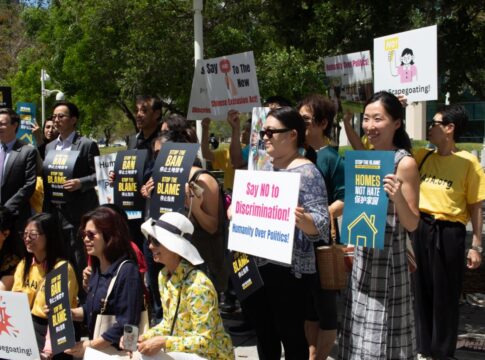The concept of the glass ceiling often refers to the limitation of women in leadership roles, but scholars also often talk of a second constraint in the workplace. It has to do with race. The “bamboo ceiling” refers to the limited number of Asian Americans in high-ranking, executive positions in the corporate world. According to data from 2012, Asians represent only 1.5% of corporate officer positions in Fortune 500 companies.
The Harvard Business Review recently examined what’s behind the bamboo ceiling.
Typically, Asians boast the seemingly positive stereotype, that of the “model minority.” 2010 statistics from the US Department of Labor reveal Asian Americans above age 25 have a college graduation rate of 52%, a low unemployment rate of 7.5%, and earnings averaging $855 per week. All compare favorably to Whites.
But there are clear disadvantages to the stereotype, and in the business world, the disadvantage shows through the lack of Asians in executive positions.
LATEST STORIES
Take for example five notable technology companies from Silicon Valley: Google, Hewlett-Packard, Intel, LinkedIn and Yahoo. According to a study done in the Valley, these companies represent high concentrations of Asian American professionals, about 27% of the overall workforce. Yet in managerial and executive roles, only 19% and 14% are Asian respectively. This is a stark juxtaposition to the 62% white employees and 80% of executive Caucasians in the same companies.
So what about the “Model Minority” catalyzes such numbers? The Harvard Business Review makes two assumptions: the model minority stereotype makes Asians appear threatening. Secondly there is a stereotype that Asians lack the social skills necessary to be leaders.
These assumptions directly counter the stereotypical idealization of a leader. Leaders are typically expected to be charismatic, competent, and dedicated workers. Leaders are presumed as possessing a sense of authority and masculinity.
Asian women, who must overcome both the glass and bamboo ceilings, make up just 3.1 percent of the executives in the five tech companies analyzed versus 13.5 percent for Asian men.
Asian culture may also play a role in reinforcing these stereotypes. Asian societies are known to promote deference and humility toward authorities, which differs from the western culture, which espouses self-promotion and advocacy.
So how does one combat the race issue?
Defying stereotypes poses a Catch-22. In a study by researchers Berdahl and Min, Asians who did not conform to expected stereotypes were more harshly evaluated. Furthermore, advocates for diversity in the workplace are considered less competent professionally. These harsh realities create a cyclical effect wherein Asian workers ultimately lose motivation to become leaders.
The suggested resolve focuses on expanding the definition of a leader. More minorities and women may be seen in leadership roles if the job descriptions embraced all kinds of personalities, from the macho to the meek, for its leaders.
AsAmNews is an all-volunteer effort of dedicated staff and interns. You can show your support by liking our Facebook page at www.facebook.com/asamnews, following us on Twitter, sharing our stories, interning or joining our staff.









